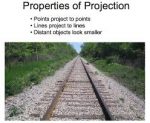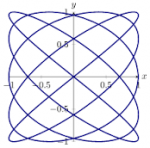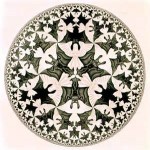|
|

Deciphering the principles of self-organizing systems is often at the heart of new ideas in biology, including neurobiology. A complex, self-organizing system contains a large
number of elements that have predictable, local interactions with each other, but these local interactions create global properties that cannot be predicted from even the most well-understood local events. This […]
The idea that geometry in Gothic architecture was used to structure ideas, rather than the edifice itself, has come up before here at Mathematics Rising. But I would like to focus a bit more on this today because it illustrates something about mathematics, and mathematics’ potential, that the modern proliferation of information may be obscuring. […]

Roger Antonsen came to my attention with a TED talk recorded in 2015 that was posted in November. Characterized by the statement, “Math is the hidden secret to understanding the world,” it piqued my curiosity. Antonsen is an associate professor in the Department of Informatics at the University of Oslo. Informatics has been […]
First, I would like to apologize for posting so infrequently these past few months. I have been working hard to flesh out a book proposal closely related to the perspective of this blog, and I will be focused on this project for a bit longer.
However, a TED talk filmed in Paris in May came […]

The Amazing World of MC Escher is a new exhibit at the Scottish National Gallery of Modern Art in Edinburgh. It will be there from June 27 to September 27. The exhibit prompted a nice piece on Escher in The Guardian. Author Steven Poole mentions, but does not much explore, the relationship between Escher’s work […]
Studies and insights into the nature of consciousness always get my attention. Inevitably I see mathematics in the discussion, tangentially or directly (as with Giulio Tononi’s qualia space). I’d like to outline, here, a particular train of thought that emerged after reading a couple of articles and a few papers.
The first of these, written […]
I read a short article on scientificamerican.com reporting on a recent advance in the investigation of the neural systems that support navigation, or our sense of direction. When I did some follow-up on the individual who led the study, I was surprised to find another interesting collaboration between scientists and artists. While the collaboration was […]
An article on physicsworld.com reported the discovery of variable stars whose periodic dimming and brightening frequencies have a ratio at or very near the golden ratio.
The objects were found in data from the Kepler space telescope by looking for stars with two characteristic pulsation frequencies that have a “golden ratio” of approximately 1.62. The […]
A post from John Horgan with the title Did Edgar Allan Poe Foresee Modern Physics and Cosmology? quickly got my attention. Horgan writes in response to an essay by Marilynne Robinson in the February 5 New York Review of Books where Poe’s book-length prose poem Eureka was brought to his attention. Eureka was written by […]
Recently, I became intrigued with the discussions of topology that I found among architects and historians of architecture. I saw a few familiar threads running through these discussions – like the emergence and self-organizing principles of biology, together with the view that mathematics was not, primarily, a tool but more a point of view.
I […]
|
|





Recent Comments